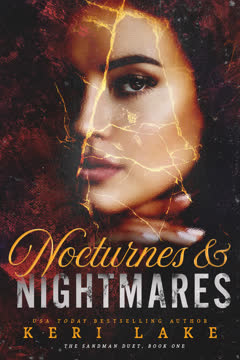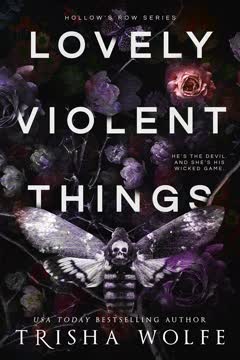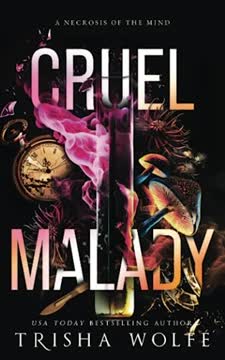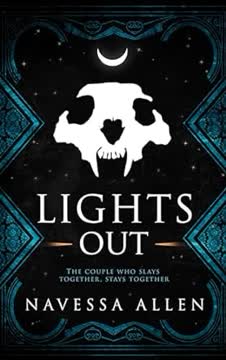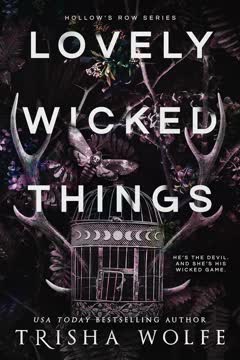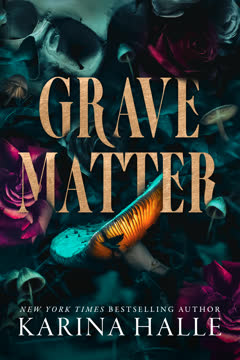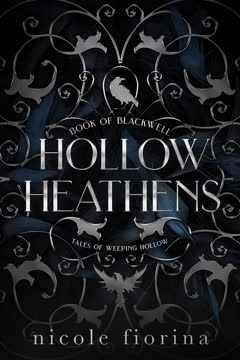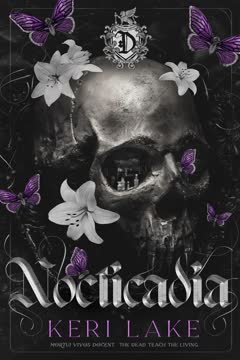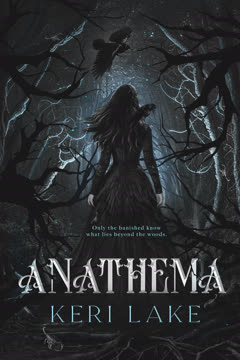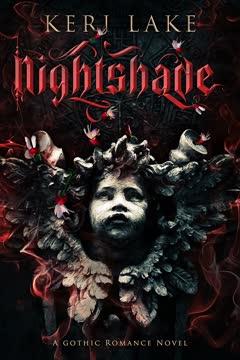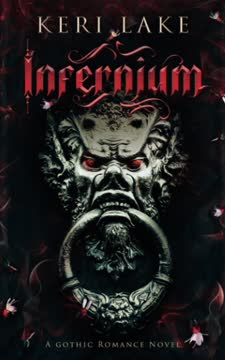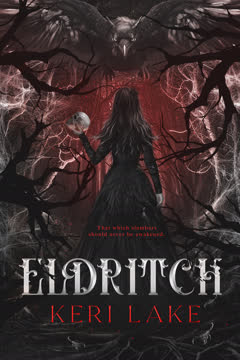Plot Summary
Nightmares Behind the Shed
In the chilling prologue, a young boy cowers behind a rusted barrel, hands clamped over his ears to block out the screams coming from a nearby shed. The terror is not imagined—on the other side of the door, his uncle is torturing a living creature, and the boy glimpses blood, tools, and a jar of eyes. The legend of the Sandman, a monster who steals the eyes of children, suddenly feels all too real. The boy's body is paralyzed by fear, unable to intervene or escape. He realizes, with a child's clarity, that monsters are real—and sometimes, they are family. This trauma will echo through his life, shaping the man he becomes and the darkness he must one day confront.
Broken Promises, Heavy Hearts
Nola's life is a daily struggle against disappointment and heartbreak. Her marriage to Denny, once full of hope, has decayed into resentment and neglect. Denny is a drunk, absent father, and Nola is left to shoulder the burdens of bills, parenting, and emotional labor alone. Their son, Oliver, is caught in the crossfire, wishing only for peace between his parents. Nola's heart aches for the boy she once loved and the man Denny has become. When Denny fails to provide for Oliver's birthday, Nola is forced to pawn her wedding ring. The weight of her choices and the pain of her broken family threaten to crush her, but she clings to the hope of giving Oliver a better life.
The Sandman's Shadow
The myth of the Sandman haunts both Nola and Oliver. After a bitter argument, Nola leaves Oliver with Denny for the night, only to return to an empty house and a chilling phone call from Denny, who whispers a cryptic apology before the line goes dead. Panic-stricken, Nola races through the city, desperate to find her son. She discovers Oliver traumatized but alive, hiding in the car, while Denny is found brutally murdered in an abandoned building. The violence is shocking, the wounds ritualistic. The Sandman, once a childhood story, now seems to stalk their reality, leaving Nola and Oliver shattered and afraid.
Shattered Family, Silent Son
Six months after Denny's murder, Nola and Oliver are barely holding on. Oliver has stopped speaking, locked in a shell of trauma and anger. Therapy sessions yield little progress, and Nola is consumed by guilt, blaming herself for every misstep. She struggles to provide for Oliver, working long hours and selling her pottery on the side. The memory of her own family's tragedies—her sister's disappearance, her mother's decline—haunt her, deepening her sense of failure. Yet, she refuses to give up, determined to protect what remains of her family, even as the world feels increasingly unsafe.
Stranger in the In-Law Suite
Desperate for extra income, Nola rents out the in-law suite behind her house. The new tenant, Voss, is enigmatic, intimidating, and oddly compelling. He offers far more than the asking price, raising Nola's suspicions, but his background check is spotless. Voss claims to be a stock trader from New York, but his demeanor and scars hint at a darker past. Despite her reservations, Nola allows him to move in, hoping for stability but fearing she's invited danger into her home. The tension between them is immediate, a mix of wariness and undeniable attraction.
Games of Cat and Mouse
Voss is not who he claims to be. A former military operative and assassin, he is lured back to Chicago by a cryptic message from a figure out of his nightmares—his sadistic uncle, Carl, presumed dead. Carl taunts Voss with riddles and threats, promising to claim a new victim: Nola. The game is set, with Voss as both hunter and hunted. He takes the apartment to watch over Nola, determined to protect her from Carl and perhaps atone for his own haunted past. The lines between protector and predator blur as Voss is forced to confront the darkness within himself.
The Killer's Calling Card
A new wave of murders rocks Chicago. Young women are found with their eyes removed and sockets filled with sand made from bone meal—a grotesque calling card. The media dubs the killer "The Sandman." Voss recognizes the ritual from his childhood, confirming his uncle's involvement. Meanwhile, Nola receives a threatening note on her car, echoing the Sandman's twisted games. The danger is no longer abstract; it is personal and closing in. Voss intensifies his surveillance, while Nola's anxiety mounts, unsure whom to trust as the city's nightmares become her own.
Past Trauma, Present Danger
Nola's past and present collide. Memories of her sister's disappearance and her mother's unraveling resurface, mirroring the current threat to her and Oliver. Voss, too, is haunted by flashbacks of Carl's cruelty and his own complicity as a child. Both are shaped by trauma, their scars invisible but deep. As Voss investigates, he uncovers connections between the Sandman's victims and people in Nola's orbit, including her coworkers Bethany and Harv, whose own dark proclivities may have made them targets. The sense of safety erodes, replaced by a constant, suffocating vigilance.
The Boy Who Wouldn't Speak
Oliver's muteness is both a symptom and a shield. Bullied at school and haunted by what he witnessed, he withdraws further, communicating only through gestures and rare signs of affection. Voss, recognizing a kindred spirit in the boy, intervenes when he sees Oliver being attacked, teaching him subtle lessons in self-defense and survival. The bond between them grows, built on shared understanding of pain and the necessity of strength. Nola, witnessing this, is torn between gratitude and fear, unsure if Voss is a blessing or another threat.
The Predator's Ritual
The narrative shifts to the Sandman's perspective, revealing the meticulous, ritualistic nature of his crimes. He stalks, abducts, and tortures his victims, forcing them to choose between equally horrific fates. His obsession with eyes, latex, and the Queen of the Night flower is both sexual and symbolic—a perverse quest for purity and possession. The Sandman's voice is chillingly rational, convinced of his own virtue as he cleanses his victims. His next target is clear: Nola, the ultimate prize in his twisted collection.
Pottery, Pain, and Protection
Nola finds solace in pottery, practicing the Japanese art of Kintsugi—repairing broken ceramics with gold, embracing flaws as part of an object's history. This philosophy becomes a metaphor for her own life and Oliver's, as they try to mend what has been shattered. Voss, drawn to Nola's strength and vulnerability, becomes more involved, blurring the boundaries between tenant and protector. Their connection deepens, fueled by mutual recognition of brokenness and the desire to heal, even as danger looms ever closer.
Boundaries Crossed, Secrets Shared
The tension between Nola and Voss erupts into passion. Both are wary, shaped by trauma and loss, but their chemistry is undeniable. Voss pushes Nola to confront her boundaries, both sexual and emotional, encouraging her to embrace pleasure without shame. Their intimacy is raw, honest, and transformative, offering a glimpse of hope amid the darkness. Yet, secrets remain—Voss's true identity, the extent of the threat, and the depth of his own demons. Trust is both a risk and a necessity as they navigate the perilous game set by the Sandman.
The Witchcraft Convention
Nola's attempt to sell her pottery at a craft show turns into farce when she discovers it's actually a witchcraft convention. Embarrassed but resilient, she laughs at her misfortune, only to be rescued by Voss, who buys out her entire inventory and gives it away to the crowd. The episode provides a rare moment of levity and connection, deepening their bond. Voss's generosity and humor reveal a softer side, while Nola's gratitude and laughter offer a reprieve from the relentless tension. Yet, the respite is brief—the threat of the Sandman is never far away.
Three Hours, No Regrets
Voss and Nola seize a stolen night together in a hotel, agreeing to three hours of unrestrained intimacy. Voss challenges Nola to step outside her comfort zone, introducing her to new pleasures and pushing her to claim her own desires. Their connection is electric, built on trust and mutual need. For the first time, Nola feels seen and cherished, while Voss allows himself vulnerability and tenderness. The experience is transformative for both, but the specter of danger remains, as Voss's true mission and the Sandman's obsession threaten to tear them apart.
The Sandman's Next Obsession
The Sandman's rituals escalate, claiming new victims with increasing brutality. He perfects his methods, experimenting with drugs and suffocation, always seeking the ultimate possession. Bethany and Harv, Nola's coworkers, become his latest prey, their disappearance sending ripples of fear through Nola's world. The Sandman's fixation on Nola intensifies, his messages growing more personal and threatening. Voss races to decipher the clues, haunted by the knowledge that time is running out. The game is reaching its climax, and the cost of failure is unthinkable.
The Trap Tightens
As the Sandman closes in, Voss and Nola's lives become a battleground. Surveillance, secrets, and suspicion strain their fragile trust. Voss installs cameras to protect Nola, but the invasion of privacy raises new questions. Jonah, Nola's brother and a detective, grows wary of Voss, sensing danger but unable to pinpoint its source. Oliver, caught in the crossfire, begins to emerge from his silence, showing signs of resilience and hope. The family's bonds are tested as the threat becomes ever more immediate and personal.
The Monster in the Mirror
Voss is forced to confront his own capacity for violence and the legacy of abuse that shaped him. Memories of Carl's cruelty and his own complicity haunt him, blurring the line between protector and predator. Nola, too, faces her fears, grappling with guilt over her sister's disappearance and her own survival. Both must reckon with the monsters in their pasts if they are to have any hope of defeating the one stalking them now. The battle is as much internal as external, a fight for redemption and self-acceptance.
The Final Bloom
The Sandman's preparations reach their zenith. He perfects his ritual, blending poison, latex, and the Queen of the Night flower in a macabre tableau. His obsession with Nola becomes all-consuming, and he sets the stage for their final confrontation. Voss, piecing together the clues, realizes the depth of the threat and the stakes of the game. The novel ends on a knife's edge, with the promise of reckoning and the hope that, even in the darkest night, there may be a dawn.
Characters
Nola Tensley
Nola is the emotional heart of the story—a woman battered by loss, betrayal, and trauma, yet fiercely protective of her son, Oliver. Her marriage to Denny was once a source of hope but became a wellspring of pain, leaving her to navigate single motherhood and financial hardship. Nola's psyche is marked by guilt (over her sister's disappearance and Denny's death), anxiety, and a deep longing for safety and love. Her journey is one of gradual reclamation—of agency, desire, and self-worth. Through pottery and the philosophy of Kintsugi, she learns to embrace her scars, finding beauty in brokenness. Her relationship with Voss is both a risk and a lifeline, forcing her to confront her fears and trust again.
Rhett Voss
Voss is a man forged in violence and secrecy. A former military operative and assassin, he is both predator and guardian, shaped by a childhood of abuse at the hands of his uncle, Carl. Voss's psyche is a battleground of apathy, rage, and a desperate need for control. He is drawn to Nola not only by duty but by a deep, unspoken kinship—recognizing in her a fellow survivor. His methods are ruthless, his morality ambiguous, but his loyalty is absolute. Voss's development is a struggle between the darkness he inherited and the possibility of redemption through love and connection. His relationship with Oliver, a boy who mirrors his own wounded past, is particularly poignant.
Oliver Tensley
Oliver is the embodiment of innocence lost. Witnessing his father's murder leaves him mute, withdrawn, and angry. His silence is both a symptom of trauma and a form of resistance—a way to control a world that has rendered him powerless. Yet, beneath the surface, Oliver is observant, intelligent, and resilient. His gradual re-engagement with the world, aided by Voss's intervention and Nola's unwavering love, is a testament to the possibility of healing. Oliver's journey is one of reclaiming voice and agency, even in the face of overwhelming fear.
Carl Jansen / The Sandman
Carl is the novel's central antagonist—a psychopath whose cruelty is both methodical and deeply personal. As the Sandman, he enacts elaborate rituals of torture and murder, obsessed with eyes, purity, and possession. His relationship with Voss is foundational, having shaped Voss's capacity for violence and his lifelong trauma. Carl's psyche is a labyrinth of rationalizations, delusions of virtue, and a need to dominate. He is both a literal and symbolic monster, embodying the generational cycle of abuse and the darkness that can lurk within families.
Jonah Stiever
Jonah is Nola's older brother and a detective with the Chicago police. He is a stabilizing force in Nola's life, offering support, guidance, and a measure of safety. Jonah's own psyche is marked by the unresolved trauma of their sister's disappearance and the burden of responsibility he feels for his family. He is skeptical of Voss, sensing danger but unable to fully grasp its nature. Jonah's development is a study in the limits of law and the complexities of familial love.
Bethany Bennington
Bethany is Nola's coworker and friend, known for her wild lifestyle and open marriage with Harv. Her penchant for risk and thrill-seeking makes her vulnerable to the Sandman's predations. Bethany's character explores themes of agency, sexuality, and the dangers of transgression in a world that punishes women for stepping outside prescribed roles. Her fate serves as a grim warning and a catalyst for Nola's growing fear.
Harvey "Harv" Bennington
Harv is Bethany's husband, a crude and persistent presence in Nola's life. His inappropriate advances and history of harassment make him a suspect in the unfolding violence, but he is ultimately more pathetic than dangerous. Harv's character functions as both comic relief and a commentary on the everyday threats women face, contrasted with the more existential horror of the Sandman.
Simon Jeffries
Simon is a regular at the diner where Nola works, initially presented as shy and harmless. His interactions with Nola and Bethany are tinged with social awkwardness, but he proves unexpectedly brave when he intervenes during an assault. Simon's character highlights the complexities of masculinity and the potential for quiet heroism in unlikely places.
Denny Tensley
Denny is Nola's estranged husband and Oliver's father. His descent into addiction and irresponsibility is both a source of pain and a catalyst for the novel's events. Denny's murder, staged to look like a drug-related crime, is the inciting trauma that shatters the family and sets the Sandman's game in motion. His memory haunts Nola and Oliver, a reminder of love's fragility and the consequences of broken promises.
Nora Stiever
Nora is Nola's older sister, whose disappearance years earlier remains an open wound in the family. Her absence is a source of guilt and sorrow, shaping Nola's worldview and her relationship with Jonah. Nora's fate is a haunting mystery, symbolizing the unresolved traumas that linger across generations.
Plot Devices
Dual Perspectives and Interwoven Timelines
The novel employs a dual narrative structure, alternating between Nola's and Voss's perspectives, with interludes from the Sandman's point of view. This device allows readers to inhabit the minds of both victim and protector, as well as the predator, creating a web of empathy, tension, and dramatic irony. Flashbacks to childhood trauma and past losses are interwoven with present-day events, enriching character development and heightening suspense.
The Sandman Legend and Ritualistic Symbolism
The Sandman myth functions as both a literal and metaphorical device, blurring the line between childhood fears and adult realities. The killer's rituals—removing eyes, filling sockets with sand, using latex and flowers—are laden with symbolism, representing control, purity, and the perversion of innocence. These motifs recur throughout the narrative, linking past and present, and underscoring the cyclical nature of trauma.
Foreshadowing and Red Herrings
The novel is rich in foreshadowing, with early references to the Sandman, missing women, and family secrets planting seeds of dread. Red herrings abound—Harv's harassment, Bethany's lifestyle, Simon's awkwardness—keeping readers guessing about the true source of danger. The gradual revelation of Voss's identity and Carl's survival is masterfully paced, maintaining suspense until the final chapters.
Kintsugi and the Philosophy of Repair
Nola's practice of Kintsugi—repairing broken pottery with gold—serves as a central metaphor for the characters' journeys. The philosophy that brokenness can be beautiful, that scars are part of one's story, is echoed in the emotional arcs of Nola, Oliver, and even Voss. This device offers hope amid horror, suggesting that survival is not about erasing pain but integrating it into a new, stronger self.
The Game and the Countdown
Carl's taunting messages and the promise of a deadly game create a sense of impending doom. The countdown to the Sandman's next act, the clues left for Voss, and the escalating violence all contribute to a relentless pace. The game is both literal—a contest between hunter and hunted—and psychological, forcing characters to confront their deepest fears and desires.
Analysis
Nocturnes & Nightmares is a dark, atmospheric novel that weaves together elements of psychological thriller, horror, and romance. At its core, the book is an exploration of trauma—how it shapes individuals, families, and communities, and how the scars of the past can both wound and strengthen. The Sandman is not just a killer but a symbol of generational abuse, the monster that lurks within and without. Nola and Voss, both survivors, are drawn together by shared pain and the hope of healing. Their relationship is fraught with risk but also possibility, challenging the notion that broken people are unworthy of love or happiness. The novel's use of Kintsugi as a guiding metaphor offers a powerful message: that beauty can be found in imperfection, and that survival is an act of art. The story warns of the dangers of silence—whether in the face of abuse, grief, or fear—and champions the courage it takes to speak, to trust, and to fight for a better future. In a world where monsters are real, Nocturnes & Nightmares insists that hope, too, is real—and that even in the darkest night, there is the possibility of dawn.
Last updated:
Review Summary
Nocturnes & Nightmares is a dark romantic thriller that captivated readers with its suspenseful plot and complex characters. Many praised the author's skillful writing and ability to create a chilling atmosphere. The story follows Nola, a single mother, and Voss, a mysterious man with a dangerous past. Readers were intrigued by the serial killer subplot and the building tension between the main characters. While some found certain scenes disturbing, most appreciated the book's intensity and unpredictability. The cliffhanger ending left many eagerly anticipating the sequel.
Sandman Series
Similar Books
Download PDF
Download EPUB
.epub digital book format is ideal for reading ebooks on phones, tablets, and e-readers.
